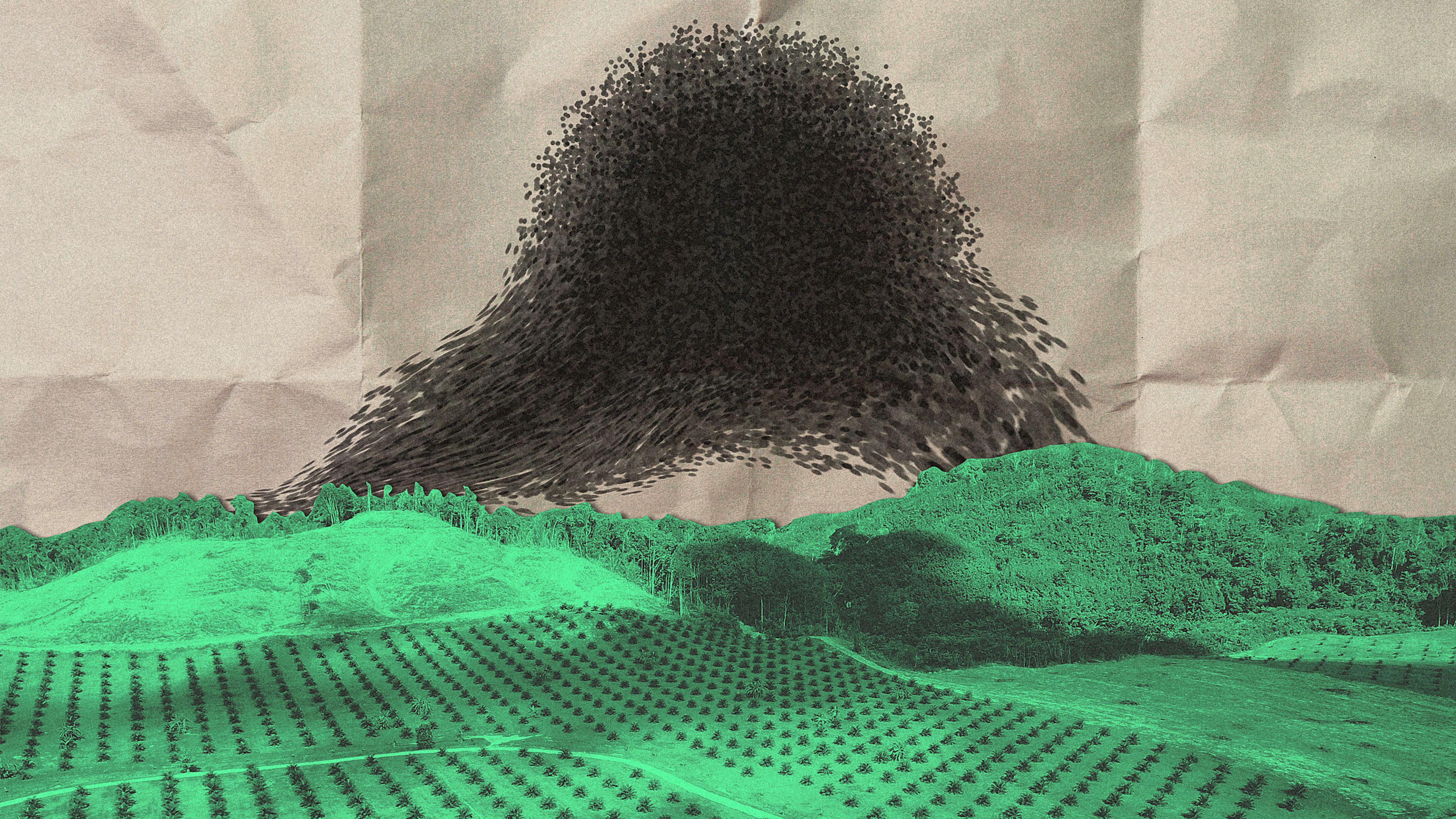Fossil fuel emissions are, by far, the biggest chunk of the planet’s greenhouse gas problem. But how land use changes is another major challenge, from rainforests that are burned to make way for agriculture in Brazil to peatland forests that are drained to plant palm plantations in Malaysia. All these events change the total amount of global emissions, but it’s still very difficult to estimate the precise amount.
“It has huge uncertainties,” says Pep Canadell, executive director of the Global Carbon Project, a coalition of scientists that estimate global emissions each year. After CO2 emissions from fossil fuels temporarily dropped in 2020 because of the pandemic, the scientists found in a pre-print study that they’ve grown again this year, and may hit 36.4 billion tons by the end of 2021. But the emissions from land use changes are hazier: The group recently reported that land use emissions may have been slightly dropping over the last decade—and half the size that the scientists projected under previous models.
The models are still so uncertain that it’s difficult to know what’s actually happening. The data for fossil fuel emissions also has flaws. Without knowing the baseline numbers, it’s harder for the world to plan how to cut emissions to avoid the worst impacts from climate change. And the uncertainties in emissions from nature make it hard (or impossible!) for countries or companies to accurately say that protecting a particular forest can “offset” the fossil fuels they’re still burning.
Some of the data is improving; satellites, for example, can track some information well. “When a tree disappears, we can actually tell it has disappeared,” Canadell says. But, he says, “land use change isn’t just cutting down trees. It’s a lot of things.” Other sensing technology can look through the forest canopy and is beginning to track degradation, a step before deforestation, when the forest permanently loses some biological wealth. But it’s much harder to know what’s happening at a detailed level.
“Some forests have a third or a fourth of the biomass in the soil,” says Canadell. Right now, it isn’t possible to easily measure the emissions from decomposition in that soil—how much microbes are emitting, and how much carbon stays in the soil. “For that, you need models,” he says. “You cannot measure these things in any other way, globally. And that’s why we put all these emphasis in making the models better and tested with some real data.”
Climate Trace, a project that is using satellite data and artificial intelligence to track global emissions, says that land use is a particular challenge. “I think of it as, it’s quick and easy to roughly estimate square meters of land cover from space, and techniques to quantify cubic meters of above-ground biomass using techniques like LiDAR are improving,” Gavin McCormick, cofounder and executive director at WattTime, one of the nonprofits behind Climate Trace, said over email. “But that still leaves big error bars. What about underground? Really hard to see that from space. We’re making some progress on these questions, but still have a long way to go.”
When countries report their own emissions to the United Nations under the Paris climate agreement, they’re often fudging numbers on land use change and overestimating how much carbon the existing forests can absorb. A recent Washington Post investigation noted that Malaysia’s report on its emissions claimed that its forests were absorbing emissions four times faster than similar forests in next door Indonesia, which the country claimed could offset its other emissions. Malaysia has also argued that converting peatlands into palm oil plantations causes only a fraction of the emissions that other scientists say is likely.
The Post report outlines the other problems with the current system of reporting emissions to the United Nations. The data is often very delayed (China last reported in 2014; Iran, another large emitter, last reported in 2010). It’s often very incomplete or inaccurate. The methane emissions counted in the U.S., for example, may be 60% lower than actual emissions. The Post estimated that globally, emissions are underreported to the UN by between 8.5 billion tons and 13.3 billion tons.
Fossil fuel emissions are getting easier to track independently. Planes with methane sensors, for example, can track methane emissions from above. Since it launched last year, Climate Trace has already found in its analysis that emissions from oil and gas have been underreported by billions of tons. The platform can help offer a more complete picture of emissions and the reductions that are actually happening. The Global Carbon Project uses statistics from fossil fuel imports and exports to make its estimates. But emissions from land use change are still a gap.
Because of the uncertainty in land use emissions models—understanding both how much carbon forests are absorbing from the atmosphere, and how much they’re releasing—any attempts to make “net zero” claims based on nature should be taken with a grain of salt. When a company or country claims to offset fossil fuels by planting trees or reducing deforestation, it’s hard to calculate an exact equivalency. “From an atmospheric point of view, the principles are correct,” says Canadell. “But if you don’t know very well what’s going on with land use change, either through emissions or sinks, and you compare it to something where we know exactly what it is, there is a bit of a problem. These uncertainties should be a very big deal when we do carbon offsets.”
Recognize your brand’s excellence by applying to this year’s Brands That Matter Awards before the early-rate deadline, May 3.
